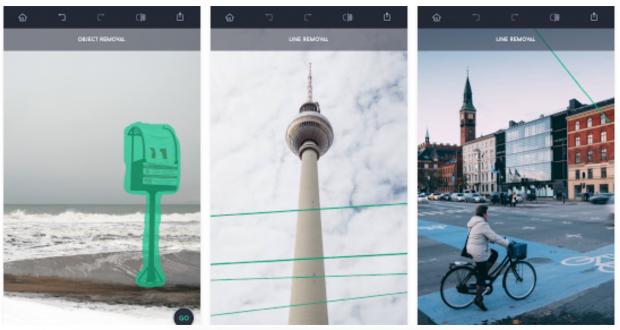In that sense, the new Samsung Gear 360 for 2017 shares the same goal as the first iteration: make shooting 4K 360-degree video content easy and relatively affordable. However, it goes about its mission in a much sleeker fashion, ditching the bulbous heft of last year’s model and opting for a more portable build that’s arguably easier and more fun to use.
However, comparing them down the smallest detail reveals that the new model isn’t exactly an upgrade in every way. For instance, the aperture and megapixel values on each of the two 180-degree lenses are less than we found in last year’s version. Also, the battery capacity has taken a bit of a hit in the journey to slimming down its form factor.
Samsung’s new VR-ready camera is now available for pre-order in the UK for £219 (about $283, AU$375). There's no telling when it will launch, though the pre-order period ends in mid May. As far as launching elsewhere, Samsung is still keeping quiet.
But given that it’s smaller to stick in a tote bag than its predecessor and seems to live up to what made the Gear 360 notable in the first place should be enough to make it worth buying, at least for first-time buyers
Features
High-speed sports camera, this is not. But Samsung looks to its Gear 360 to steal away some of GoPro’s pie with a stellar companion app and unique features like live video streaming.
It’s a surprise to nobody that the main appeal of this camera is that it can shoot video in a full, world-encompassing 360-degrees. The pocket-size construct of Samsung’s Gear 360 for 2017 makes it a more ideal option than last year’s model for those on the go, whether you’re capturing some precious vacation memories or just showing off your neighborhood to the world via Facebook Live.
But why record in 360-degrees, you ask? Well, for a variety of reasons. It’s cool. Your current camera probably can’t do it. Plus, and most importantly, these clips are viewable inside of VR headset, whether it be the Samsung Gear VR, the Google Daydream View, or any other major headset. Someone else can step into your shoes and see what your world looks like. Enough said.
In dual-lens mode, the Gear 360 can record video at a resolution advertised as 4K in 24 frames per second (fps), 2K at 30fps and above 1080p in 60fps. If you’ve never seen this sort of thing in action, Samsung’s software stitches together the feed from the two lenses to make it look as seamless as possible. However, we noticed that the more action-packed the footage, the more tearing can be seen at the seams.
Additionally, users can record with a single lens, which tops out at 1080p resolution at 60 frames per second. This mode is perfect for when you want to capture some video, but you want to keep your bad hair day off the record.
Video isn’t the Gear 360’s only forte. It can also take still photos and time-lapse footage as well. While reduced from 15MP, as we saw in the original Gear 360, to 8.4MP, the photographs that this camera can churn out are quite good, rivaled in quality by, say, the Samsung Galaxy S8 and other smartphones with awesome cameras.
That said, the ability to take 360-degree photos is a factor that differentiates it from a device that can only shoot on a 2D plane.
The Samsung Gear 360 is cute. Other ways to describe it include that it looks like it belongs in the Pixar logo, and that it is shaped like a friendly cyclops.
Rounded on every corner, Samsung’s efforts to make shooting 360-degree video approachable and ergonomic show in the solid build quality here.
Taking a tour around the Gear 360, you’ll find one wide-angle lens on each side and some buttons peppered around the unit.
On the “front” lens, which bears no obvious indication of that designation other than a vague LED light, you’ll find a large button that triggers the recording function.
Underneath, there’s a small screen that shows some pertinent info based on the mode that you’re currently on. If you’re recording video, it will display how much footage can be recorded on the memory card. Taking photos? Then it will show how many can be taken before you run out of space.
You can navigate through the screen’s limited menu by using the two buttons mounted to the side of the camera’s two lenses. One can be held to power the unit on or off and head back while inside the menu. The other triggers the menu with a tap. Additionally, you can enable Bluetooth pairing by holding down this button.
The only other physical features to speak of are its microSD slot, which flanks the small, circular screen, its camera tripod mount and the grippy stand that provides stability for the Gear 360 when it’s sitting on a desk.
Performance
For as much promise as 360-degree video capture holds, the Samsung Gear 360 isn’t the best vessel for recording it with. That’s mostly because for as much as it touts its 4K resolution, the footage really doesn’t look all that great.
That’s probably because it isn’t true 4K as you may know it. Instead of providing the sort of pixel density you’d expect from a TV boasting that resolution, it seems to spread it across the entire 360-degree view, leaving you with footage that almost looks sub-HD.
Unfortunately, what is ideal, something like Google’s Jump VR camera rig, likely costs an exorbitant amount of cash. So, we find ourselves at an temporary impasse. For the cost, even if it’s as much as the last-generation Gear 360, Samsung is asking a palatable price to pay for 360-degree video, even if the results aren’t as optimal as it is painting with its marketing language.
In terms of battery life, the Gear 360 2017 features an 1,160mAh non-swappable battery. Compare that to the 1,350mAh found in last year’s that was replaceable and the new model gets a strike against it.
What this means for everyday use is that you’ll need to carry around a portable charger to keep this Gear 360 going all day. We’ll provide more in-depth findings of the battery’s performance in our full review.
Software
I wasn’t expecting to be spending much time at all fiddling with the companion app, which is still in beta at the time of writing. However, after recording some footage and snapping some photos, I found myself unable to pull myself away.
Not only can you get a live view through the camera from within the application, you can apply all sorts of interesting viewpoints to your content, my favorite being “Round view”. It basically deletes the horizon and wraps the image around in a circle to make it look like you’re walking on a small planet.
Dual view and the others, like panoramic and stretched modes are also neat, as it shows what each of the lenses is capturing at every moment.
You may or may not spend nearly as much time in the app as I did, however, you won’t have a choice when it comes to transferring your content over to a PC or uploading it to the cloud.
Currently, the app allows you to upload to a cloud storage solution of your choice, from which you can edit it on your PC. You can also transfer it straight to your phone to share on social media or just keep available for use with Gear VR or what have you.
At this time, Samsung has not made software available that allows users to hook the new Gear 360 directly into a PC to transfer files. But if last-gen’s camera software was any indication, there should be something comprehensive arriving shortly after launch.
The most important change coming in its software is iOS support. The previous iteration only supported select Samsung phones. But, as the company has done with many of its products recently, it has opened the gate up to the iOS family, too. Now, all that’s left out are the many, many Android manufacturers.
Early verdict
Like it did last year with the original Gear 360, Samsung is treading forward in making 360-degree videos more accessible than ever.
Adding in iOS compatibility for its latest model will certainly help to boost viewership and adoption of the medium, but the Gear 360 2017 will only get so far as it falls back on some familiar hardships, namely its rather lousy video quality.
We’ll be posting more in-depth findings that will lead us to a more definitive conclusion shortly, but for now, consider Samsung’s new 360-degree camera a very small step forward and backward. Meaning, it doesn’t seem to have really moved at all in one year’s time.














No comments:
Post a Comment